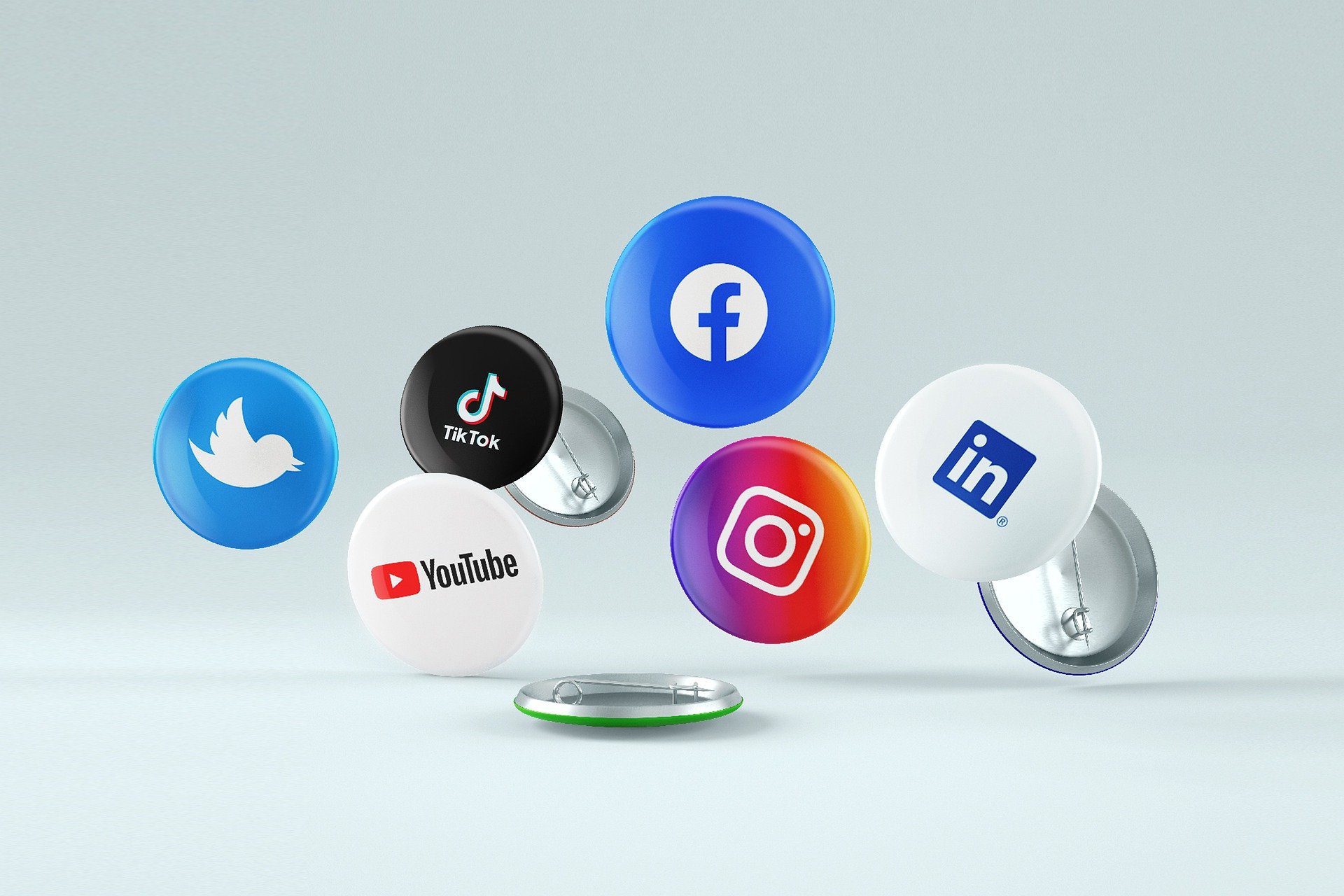Introduction
Having an active and flourishing social media presence can often put you at the front of the line; when people see that you’re interactive and personable, this is how you will connect with the audience and/or community you want. This social media guide can help you as a developer or person in the technical field learn about the benefits of using social media and brand building.
Reason #1: Why Build an Online Presence in the First Place
For myself, I’ve been active on Twitter since April with the mission to create Cybersecurity content that’s educational and fun for the community but mostly to document my journey transitioning from a college student into (hopefully) my first tech role.
As of recently, I had the amazing opportunity to go to my first tech conference ever: the StrangeLoop conference. With Twitter and their amazing tech community, I was able to raise the funds in time for me to buy a conference ticket, hotel room, and other things needed to have the best conference experience ever. That is the power of social media.
However, it is quite a journey to build an online presence on social media that’s noticeable and thriving, the benefits of having your name out there can lead to work and networking opportunities.
Before I accomplished any of this, I asked myself a few questions:
Building Yourself Online
- What do I enjoy talking about? (This leads to your content creation).
- What can I bring to the table that is different? (Find your niche).
- What can I bring of value? (How to keep your audience engaged).
You don’t have to label yourself a content creator, but what you can do is take note from some of the popular content creators that you already follow. What do they do well? What do you wish they posted more or less of?
Take notes and improve.
Learn Your Personal Brand
What even is a personal brand? Why would I care about this? When we are speaking of your personal brand, let’s erase the idea of influencers, celebrities, and marketers for a moment. Let’s just focus on you and how you make others feel when they interact with you. This is the meaning behind your personal brand. When people look up your name, what do you want them to see and how do you want them to feel?
When you understand your personal brand, it’s easier to build trust with the community you want to provide value to, and it allows you to build the story that best represents you to the public (professionally and non-professionally).
Reason #2: Choosing your Social Media platform.
Use, don’t abuse the hashtags + keywords
One of the common problems people face when using social media to promote their work is the question of: what social media platform should I use?
There are obviously popular ones such as Facebook, Instagram, Twitter, TikTok, YouTube. Some may start off with one platform and work from there. From personal experience, I began with Twitter and stumbled upon the amazing tech community.
Thoughts on Different Social Media Platforms:
Twitter can help with creating and building engaging conversations around what you love to do with others. TikTok allows you to create short reels that have to be quick and catchy for the audience’s eyes to capture. YouTube allows the audience to get a more in-depth view of what you do on the daily or expand upon short tutorials you may have created in the past.
Once you’ve picked your platform and gained a bit of traffic, it is helpful to drive that traffic to other platforms. For example, someone is more than likely to visit your Twitter than your personal blog. Eventually, you will get a feel of what suits you best.
Make Sure Your Audience Exists
Sometimes, it’s not you. It’s the social media platform. You could be posting the greatest content ideas you’ve ever had, but if the audience isn’t frequenting the platform you’re on, you’re speaking to an empty room. Do research prior to posting and investing time in a platform before you realize that everyone else has already moved on to the next big social media platform.
Something far more important though is how you post your content.
Get to the Point
Getting someone’s attention to stick to your post is the main goal; you don’t have long so use your words wisely. Think of what you want to say; then say it shorter. For example, on Twitter, it could be a bit of clutter for others to read extremely long threads despite how amazing your content may be. This advice would not apply to lengthy tutorials that are lengthy for the sake of getting someone through a task step-by-step.
Hashtags, Use Them, Don’t Abuse Them
Hashtags can be beneficial when you want to reach out to your target audience. However, your posts can be viewed as spammy when you use too many hashtags. To keep it simple, don’t use #hashtags #for #every #single #hot #word.
Learn keywords as well in posts that you may see on your own timeline. There are free tools out there already that can help you find what words are trending. For example, on Twitter, there is TweetDeck that allows you to add and remove different columns such as trending topics or recent activity that your followers engage in. On YouTube, a tool called TubeBuddy where you can see what tags are popular and best suited to your videos as well as your own SEO ratings.
Reason #3: Your Content Matters (but ONLY with Engagement)
When you first post content, most aren’t going to see it. It sucks, but it is the truth. However, that doesn’t mean stop posting. It means continue posting. More importantly, engage with others that are posting similar content to yours, and don’t be afraid to show some personality in your posts.
Planning Your Content (with a little bit of Freestyle) ✍🏽
It can be a bit of work-and-play when learning how to create engaging posts. There could be many reasons why a post doesn’t get a ton of engagement; it may be too wordy, too much jargon, or posting about an extremely niche topic.
There are a number of ways you can go about posting content. You could spend at least 15 minutes a day writing down topic ideas and choosing the best ones. One of the downfalls of social media platforms, specifically Twitter, is that it benefits more to always be engaging with others.
However, you could use tools to save your content to post later (ex: FeedHive) or plan your week out full of content. You could also go old-school, get a planner, and use it as your social media calendar for days that you plan to post content (or work on content); there are other online versions for doing the same such as Trello.
What Type of Posts
Some platforms serve different types of content better than others. For example, photos can be easier to grab attention on Instagram than it can on Facebook or Twitter; this also can depend on your audience as well. When you want to write tutorials, you wouldn’t use Instagram to write them in a caption under a photo; you would more than likely resort to a reel or use photos to do a short how-to.
Some of the content could include:
- your daily thoughts
- feelings about a hot topic or recent event (ex. Facebook crashing)
- educational and quick tutorials
- live tweeting during a popular event or conference (ex. StrangeLoop)
- posting something witty that will get a few laughs
It is good to have a variety of things that show your knowledge but also that you are relatable.
Most don’t think of this but it is more than okay to recycle content that you have already posted. Feel free to reinvent the wheel; this could mean updating that tutorial you made a year ago or correcting some advice that you wrote for others.
It’s a scary and vulnerable thing to document such a journey and share with others but because of this, I’ve been able to connect and network with far more people than I could have imagined possible.
Help First, Ask Later
When you want others to watch or read your content, it is best to provide value first. There are many ways you can go about this: supporting others’ content by watching or sharing, or sharing free resources that you’ve found and helped you get where you are today.
Write When You Can, Rest When You Want
It can be frustrating and overwhelming sometimes when you want to create content and are dealing with writer’s block. Sometimes, the best way to get over writer’s block is to take a step back and think about other things you want to invest your time in that are not related to work.
Conclusion
There is no one right way to start building a social media presence in order to get the word out; however, it helps a ton when you are aware of your personal brand, what type of content you want to post, and how to format your content to be digestible.

